Habitat Regulations Assessment
Introduction
Ashford Borough benefits greatly from its attractive environment and high quality landscape whilst the council also takes seriously the requirement under the National Planning Policy Framework “to support the Government’s objective of significantly boosting the supply of homes”. The council has an up-to-date, ambitious development strategy set out in the Ashford Local Plan 2030.
Nonetheless, the council is committed to development only taking place if it is sustainable development that respects the relevant environmental protections. Part of the consideration of this is whether there would be a detrimental impact on any European Designated Nature Conservation Sites whether these are within the Borough or not.
Stodmarsh European Designated Sites
Stodmarsh lies east of Canterbury and is a Special Protection Area (SPA), Ramsar site, Special area of Conservation (SAC), and a Site of Special Scientific Interest (SSSI) and parts are a National Nature Reserve (NNR). It is a site of national and international importance for a range of water dependent habitats and wildlife that relies upon them.
During 2017/18, a review of the internationally designated lakes at Stodmarsh identified that some of the lakes there had raised nitrogen and phosphate levels, leading to eutrophication of the lakes which occurs when an excessive amount of nutrients within a water body are present, resulting in increased plant growth that reduces the oxygen content in the water. This process makes it difficult for aquatic insects, invertebrates or fish to survive, in turn removing a food source from the food cycle.
In July 2020, Natural England (NE) issued to the council an Advice on this matter in light of the relevant European case law. This advice has been updated by Natural England in March 2022 and February 2024 and can be viewed, alongside a Summary Guide and the Natural England Budget Calculator, below.
2024 Nutrient Neutrality Calculator
View and download the 2024 Nutrient Neutrality Calculator
March 2022 advice
Natural England Letter on Nutrient Neutrality [pdf] 499KB
Nutrient Neutrality Summary Guide [pdf] 141KB
Principles of nutrient neutrality [pdf] 152KB
Natural England Nutrient Neutrality Methodology March 2022 [pdf] 964KB
Stodmarsh Nutrient Budget Calculator March 2022 [xlsx] 4720KB
Stodmarsh Nutrient Budget Calculator Guidance [pdf] 797KB
Previous November 2020 advice
View Non-Technical Summary on the Nutrient Neutrality Methodology Advice for Stodmarsh [pdf] 370KB
In summary, the consequence of this Advice is to avoid the potential for any further deterioration in the water quality of the Stodmarsh European designated site pending further investigations as to the cause of the eutrophication. This has direct consequences for some new development proposals within parts of Ashford Borough.
The purpose of this Position Statement
This Position Statement sets out the council’s current approach to new development which is likely to have an adverse effect on the integrity of the Stodmarsh European sites in light of the NE Advice.
i) Scope of the Advice
a) Geographical
The NE Advice covers all areas within the Stour Valley river catchment as shown in the map at Figure 1 in the Advice (see page 8). This covers large areas of the northern and eastern parts of the Borough, including Ashford itself, as well as areas along the A20/M20 corridor from Charing in the west to Aldington in the east. In addition, the Advice lists those wastewater Treatment works (WwTW) to which effluent is drained which are also the subject of the Advice. Within the Borough, development where wastewater would drain to one of the following will also be subject to the scope of the Advice, whether the development is within the Stour catchment area or not:-
-
- Bybrook WwTW
- Charing WwTW
- Wye WwTW
- Chilham WwTW
- Nats Lane WwTW
- Westwell WwTW
Also, development within the Borough but which discharges to a Treatment Works outside the Borough which is covered by the Advice, e.g Lenham, Sellindge, Chartham, will also be within the scope of this Advice.
b) Type of Development
The NE Advice applies to all types of development where a net additional population would be served by a wastewater system. In practice, this means proposals for all new residential development where a net increase in homes is proposed; as well as new student accommodation, tourist accommodation or tourist attractions.
New commercial development that does not involve overnight accommodation will generally be exempt unless they raise other water quality issues but if in doubt please contact the council to discuss the specific proposal.
ii) Process required
Under the Conservation of Habitats and Species Regulations (2017 as amended) (hereafter referred to as the Habitats Regulations), there are significant responsibilities conferred on the council as a ‘competent authority’. Chiefly, it requires the council to only approve plans or projects (such as planning applications or a local plan) if there is no likelihood of a significant effect on any European designated nature conservation site.
A significant effect could be caused by a number of potential impacts including direct or indirect habitat loss, air pollution, water quality, increase in recreation, light pollution, or construction activity.
In order to assess whether planning applications would lead to a ‘likely significant effect’ a Habitats Regulations Assessment (HRA) is carried out. This generally includes an Appropriate Assessment (AA), which is the second, more detailed stage of an HRA. Natural England must be consulted on the findings of an HRA and there is a duty to consider their response. More detail on the process of HRA / AA can be found in the Government’s guidance on protected sites and areas and how to review planning applications and government guidance on appropriate assessment.
A potential effect would be considered ‘likely’ if it cannot be ruled out based on the information available as opposed to it merely being probable or possible. When then moving to the appropriate assessment stage, an established principle in case law is that AAs must use the ‘precautionary principle’. An appropriate assessment must enable the local planning authority to apply the regulation 63(5) “integrity test” on a “precautionary basis”. Authorisation may only be given if the competent authority has made certain there will be no adverse effect on the integrity of the site and where no reasonable scientific doubt remains. It must therefore be shown that there would be no likelihood of a significant effect in order for the council to lawfully grant planning permission.
Therefore, for developments within the scope of the NE Advice, the council will need to carry out a HRA to establish the nature and scale of potential impact on the designated sites at Stodmarsh. This will include the need for an AA, which developers will be requested to draft and submit to the council for approval if appropriate, taking into account the views of NE.
As the council currently understands the position, the only way that a new housing scheme (or other affected type of development proposal) could prevent this likely significant effect is for its submitted AA to demonstrate there to be no increase in nutrients into the Stour river catchment area, i.e. for it to be ‘nutrient neutral’.
iii) Nutrient neutrality
The NE Advice Note sets out Natural England’s methodology for establishing the nutrient impact of a proposed development. This will help to confirm what scale of mitigation will be required in order to achieve nutrient neutrality.
The Advice Note also indicates that there may be different forms of potential mitigation to achieve a nutrient neutral development. The council is in the very early stages of identifying which forms of mitigation may be most appropriate for the different forms and scales of development to which the Advice applies and more details on this will be published in due course.
Existing proposals
Proposals which would have otherwise been within the scope of the NE Advice but which already have full planning permission may proceed without needing to undertake any additional assessment exercise. The Council is now in receipt of legal advice to confirm that all Reserved Matters applications will be caught by the Natural England advice. Council officers will therefore be writing to all affected applicants to explain the position very shortly.
The council also considers that existing planning applications within the scope of the advice and either undetermined by the council or with a resolution/delegated decision to grant permission subject to the prior completion of a Section 106 Agreement or other matters, are subject to the NE advice. Council officers will be writing to all affected applicants shortly to explain the position and what steps they must take to move their applications to a point where a decision may be issued.
Existing planning applications within the scope of the advice and currently the subject of an appeal to the Secretary of State/Planning Inspectorate are also subject to the advice. These too are likely to be subject to the HRA / AA process, and council officers will be writing to the Planning Inspectorate regarding all affected applications shortly, in order that the Inspectorate may determine how it wishes these appeals to progress.
Gilian Macinnes
Head of Planning and Development
Ashford Borough Council
September 2020
Updated March 2021
For further updates, please see the Council's nutrient neutrality webpages.






